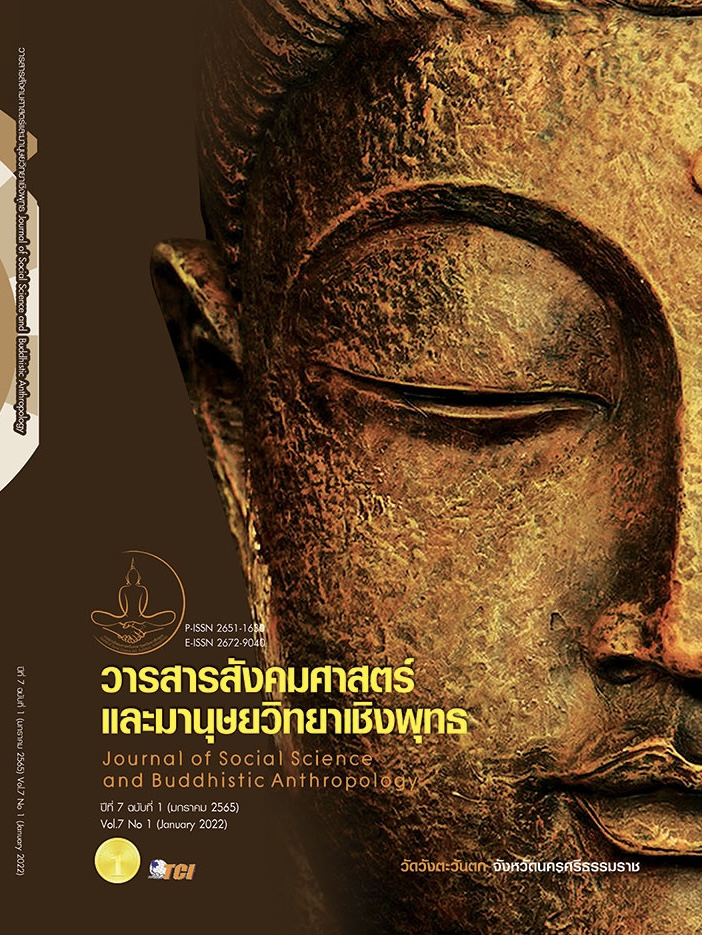THE INFLUENCE OF CAUSAL FACTORS AFFECTING OF LOYALTY TO BUY CLOTHES SHOP CLASSYPITA ON INSTAGRAM OF CONSUMERS IN THAILAND
Keywords:
Clothes, Instagram, Loyalty, Relationship, TrustworthyAbstract
The objectives of this research article were to 1) Develop and validate the consistency of the causal factors affecting loyalty to buy clothes at ClassyPita shop on Instagram of Thailand customers, and 2) Study the causative factor that influences the loyalty to buy clothes at ClassyPita shop on Instagram of Thailand customers.The research is a qualitative research; target groups are buyers from an Instagram page of ClassyPita, who lives in Thailand, a total of 365 people, selected by simple random sampling, using a questionnaire online to collect data. The statistics used for data analysis were frequency and percentage. And Structural equation model is used to analyze causal factors in order to find influence paths of the variables. The Research found that; causal factors that were developed including of 4 factors. 1) Customer engagement 2) Close relationship 3) Customers trustworthy and 4) Customers loyalty. The causal relationship model that was just developed correlation with empirical data perfectly, considering the Chi-square (χ2) = 204.98, CMIN/df = 1.40, Degrees of freedom (df) = 146, GFI = 0.95, AGFI = 0.92, SRMR = 0.06, and RMSEA = 0.03, Forecasting coefficient = 0.76. It shows that each factor in the model can explain the variances of loyalty to buy clothes at ClassyPita shop on Instagram of Thailand customers to 76%. The causal factors of loyalty of customers, customers trustworthy, and close relationship affecting the loyalty of buyers which business owners can use it to set up marketing plan strategically, and planning business strategy to fit each generation of customers, which may help increasing traffic of Instagram's ClassyPita shop in the future.
References
กริช แรงสูงเนิน. (2554). การวิเคราะห์ปัจจัยด้วย SPSS และ AMOS เพื่อการวิจัย (พิมพ์ครั้ง ที่ 1). กรุงเทพมหานคร: บริษัท วี.พริ้นท์ (1991) จำกัด.
จุฬาลักษณ์ เทียนรุ่งรัศมี และคณะ. (2559). ปัจจัยเชิงสาเหตุที่ส่งผลต่อความภักดีของผู้รับบริการการแพทย์แผนไทยในภาคตะวันออกของประเทศไทย. วารสารสาธารณสุข มหาวิทยาลัยบูรพา, 12(1) 22- 28.
ชไมพร กาญจนกิจสกุล. (2555). ระเบียบวิธีวิจัยทางสังคมศาสตร์. ตาก: โพรเจ็คท์ไฟฟ์-โฟว์.
ชลชินี บุนนาค. (2560). การสำรวจภาพแบบการดำเนินชีวิตบนอินสตาแกรม. กรุงเทพมหานคร: มหาวิทยาลัยกรุงเทพ.
ณัฐธิดา สระธรร และไกรชิต สุตะเมือง. (2557). ปัจจัยส่วนผสมทางการตลาด ความภักดีต่อตราสินค้า และความไว้วางใจในตราสินค้าที่ส่งผลต่อความ พึงพอใจของผู้ใช้บริการบริษัททราเวิล เอเจนซี่ ในเขตกรุงเทพมหานครและปริมณฑล. วารสารวิจัยทางธุรกิจ และการบริหาร, 2(1) 1-25.
ณัฐพร ดิสนีเวทย์. (2559). ปัจจัยที่ส่งผลต่อความภักดีของลูกค้าที่มีต่อตราสินค้าร้านคาเฟ่ขนมหวานใน ห้างสรรพสินค้า. กรุงเทพมหานคร: มหาวิทยาลัยกรุงเทพ.
นงลักษณ์ วิรัชชัย. (2542). โมเดลลิสเรล: สถิติวิเคราะห์สำหรับการวิจัย (พิมพ์ครั้งที่3). กรุงเทพมหานคร: โรงพิมพ์แห่งจุฬาลงกรณ์มหาวิทยาลัย.
นิธิ นิ่มปรางค์ และอนุวัต สงสม. (2561). ความสัมพันธ์เชิงสาเหตุระหว่างการยอมรับเทคโนโลยี คุณภาพของเว็บไซต์ ความไว้วางใจ และความภักดีทาง อิเล็กทรอนิกส์: การซื้อสินค้าจากร้านออนไลน์ของผู้บริโภคใน เขตอำเภอเมือง จังหวัดสงขลา. วารสารเศรษฐศาสตร์และบริหารธุรกิจ มหาวิทยาลัยทักษิณ, 11(1), 1-12.
ภาวุธ พงษ์วิทยภานุ. (2555). ความรู้เบื้องต้น e-commerce. eCommerce. คู่มือประกอบพาณิชย์อิเล็กทรอนิกส์. กรุงเทพมหานคร: สมาคมผู้ประกอบการพาณิชย์อิเล็กทรอนิกส์ไทย.
สิริชัย ดีเลิศ. (2560). การใช้สื่อสังคมออนไลน์อินสตาแกรมเพื่อสร้างความสำเร็จในการรับรู้ภาพลักษณ์ ตราสินค้าของธุรกิจ. วารสารมหาวิทยาลัยศิลปากร, 10(1), 1422-1438.
อนุวัต สมสง และ ชาลี ไตรจันทร์. (2555). กรอบแนวคิดเชิงทฤษฎีสำหรับ การวิเคราะห์ความภักดีของลูกค้าร้านค้าปลีกแบบดั้งเดิม. เรียกใช้เมื่อ 17 มกราคม 2564 จาก file:///C:/Users/admin/Downloads/ SNSSH-2012-964.pdf
Hoelter, J. W. (1983). The analysis of covariance structures: Goodness-of-fit indices. Sociological Methods and Research, 11(1), 325-344.
Kline, R. B. (2011). Principles and practice of structural equation modeling (3rd ed.). New York: Guilford Press.
Li, M. W. et al. (2020). Unlocking the customer engagement-brand loyalty relationship in tourism social media: The roles of brand attachment and customer trust. Journal of Hospitality and Tourism Management, 44(1), 184-192.
Downloads
Published
How to Cite
Issue
Section
License
Copyright (c) 2022 Journal of Social Science and Buddhistic Anthropology

This work is licensed under a Creative Commons Attribution-NonCommercial-NoDerivatives 4.0 International License.








